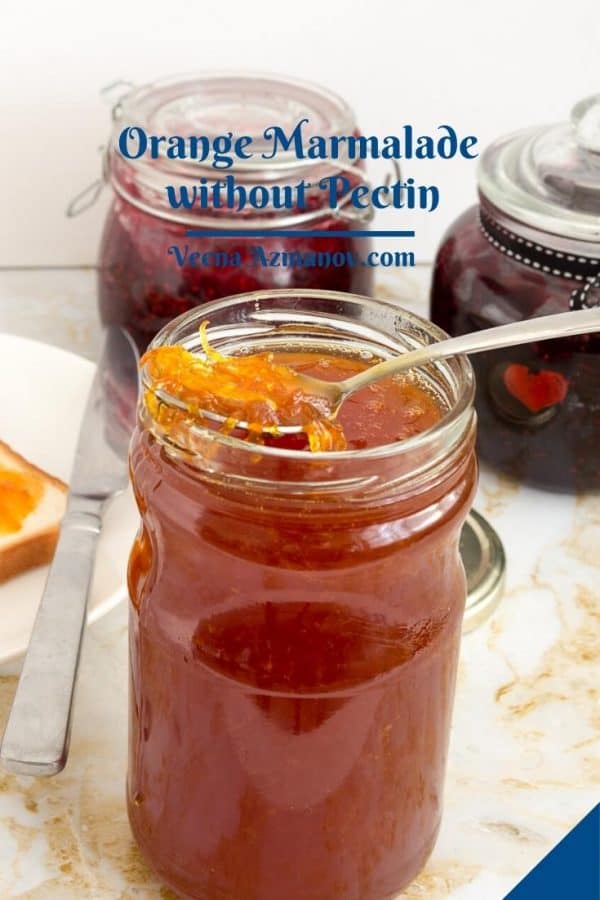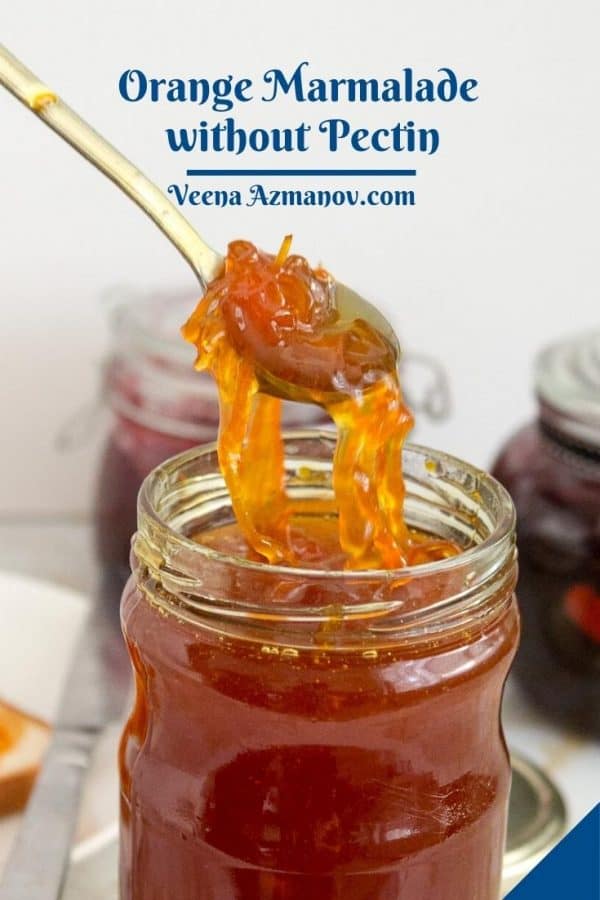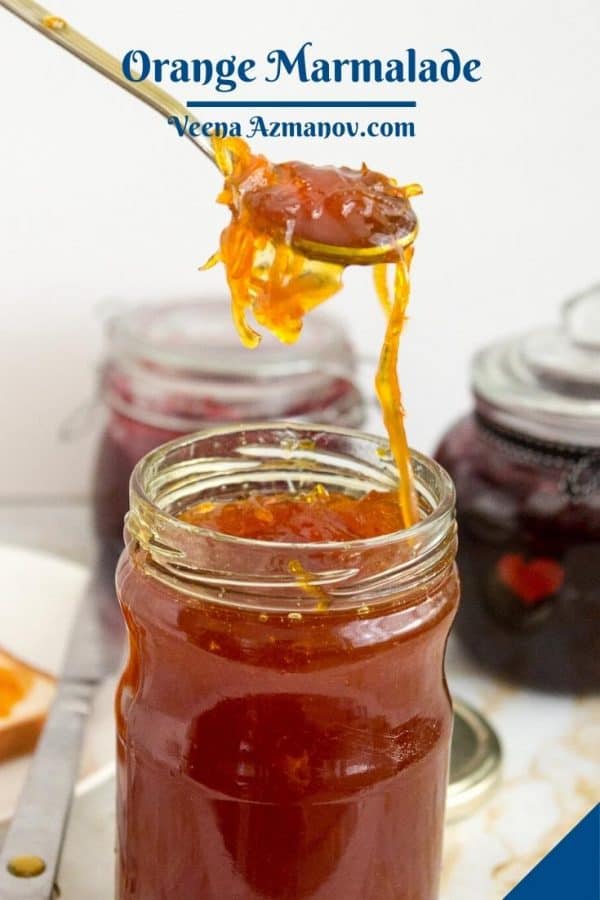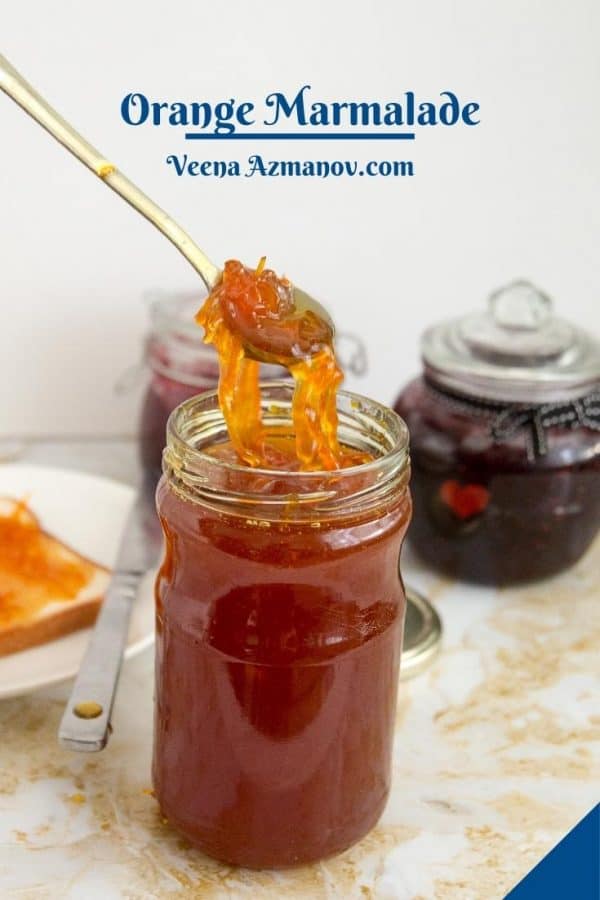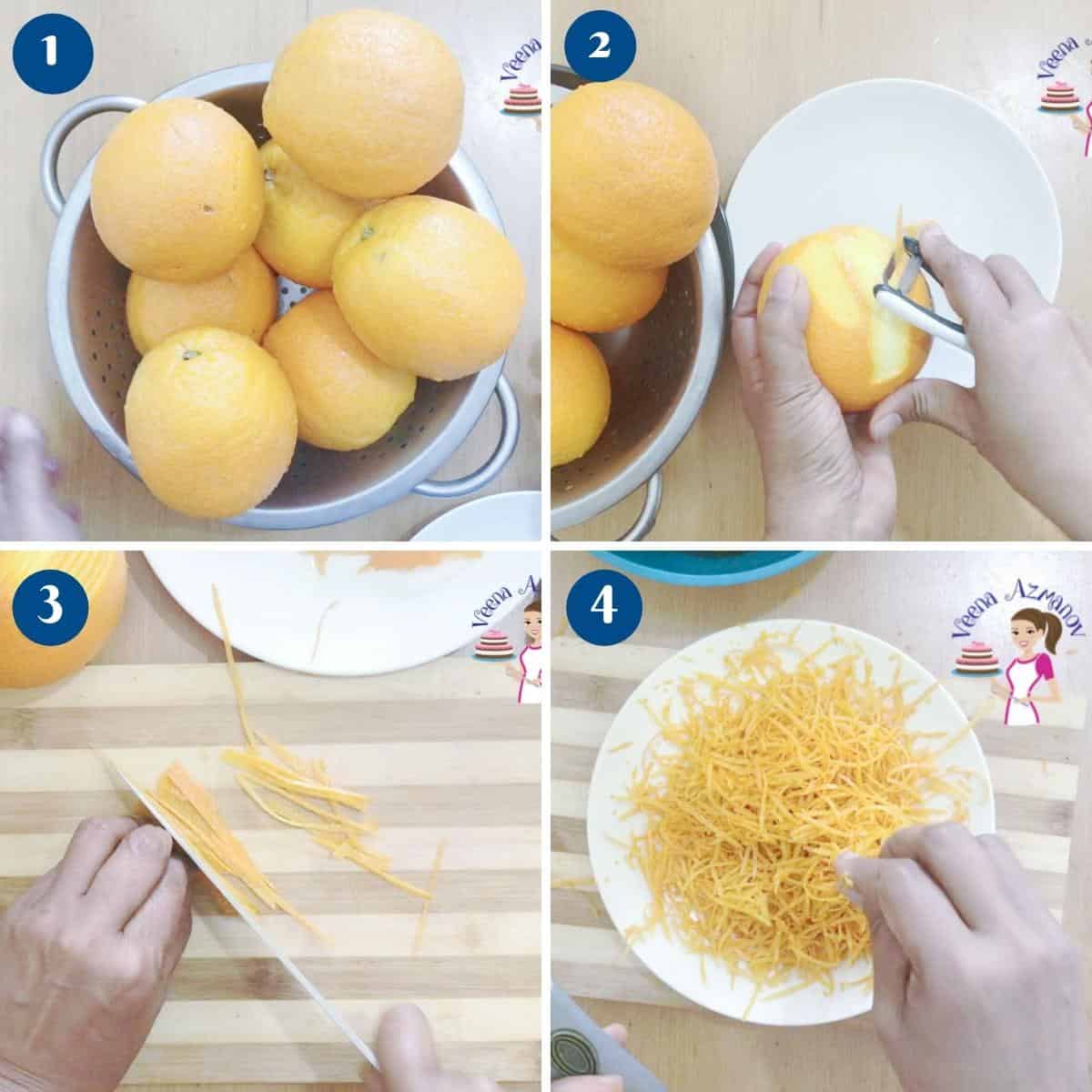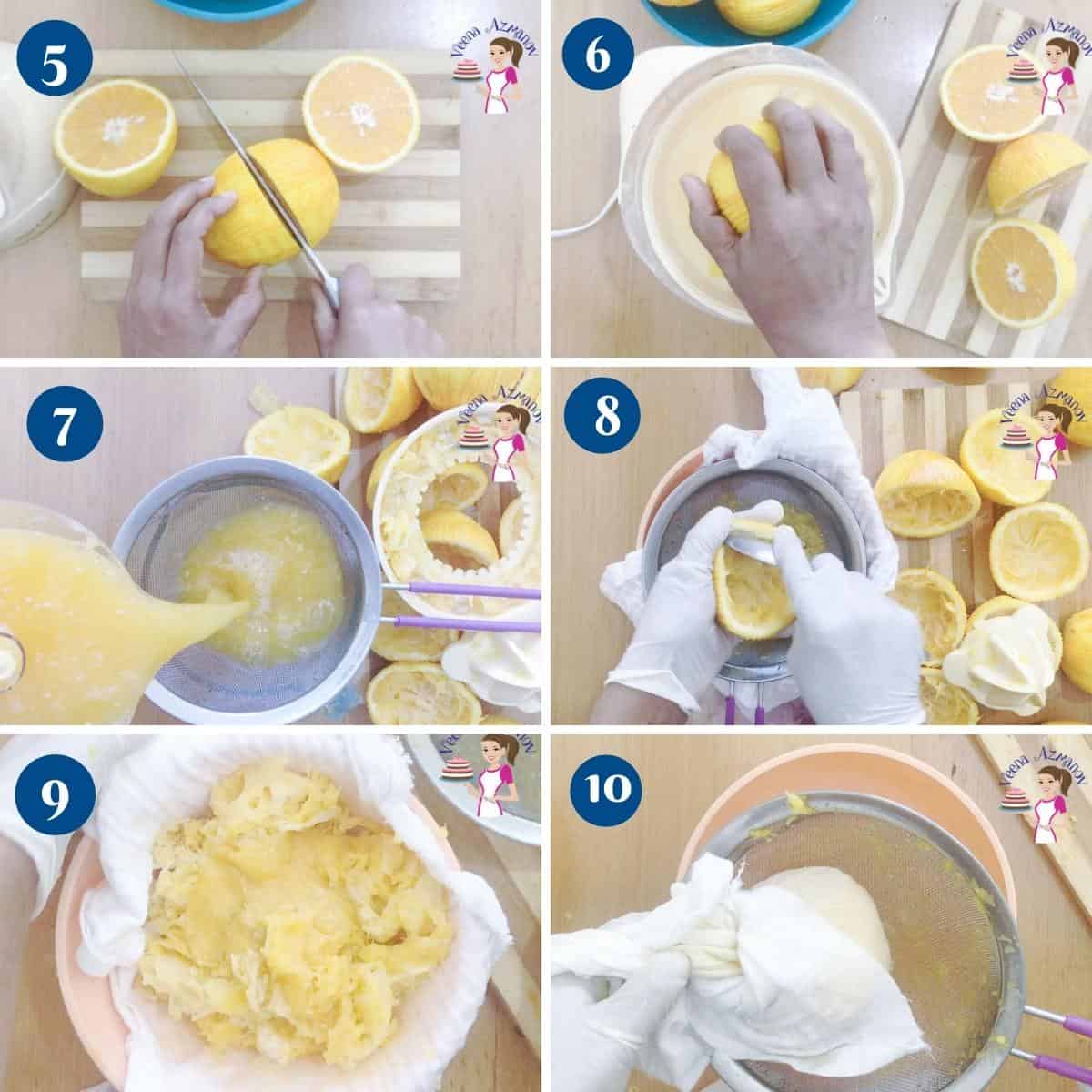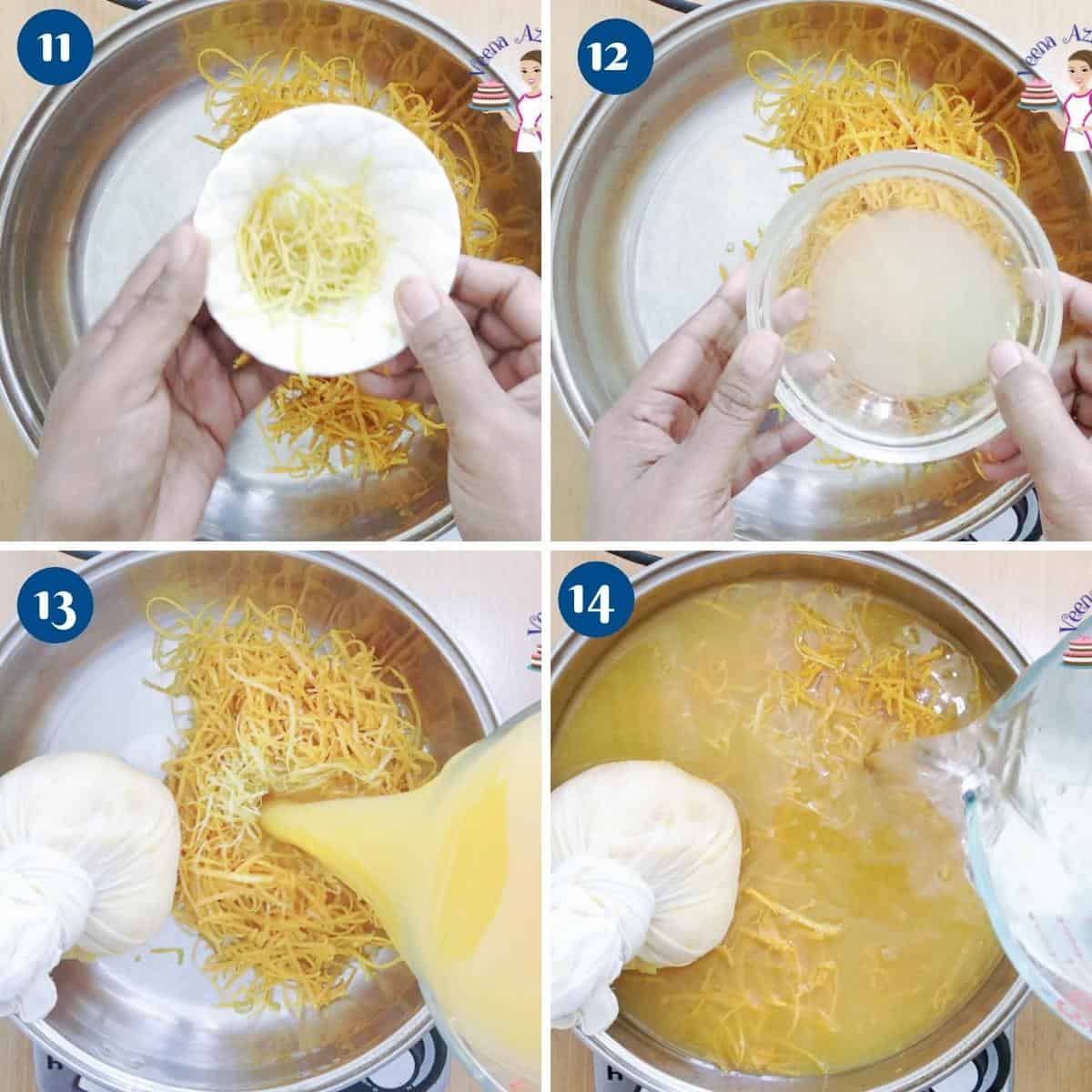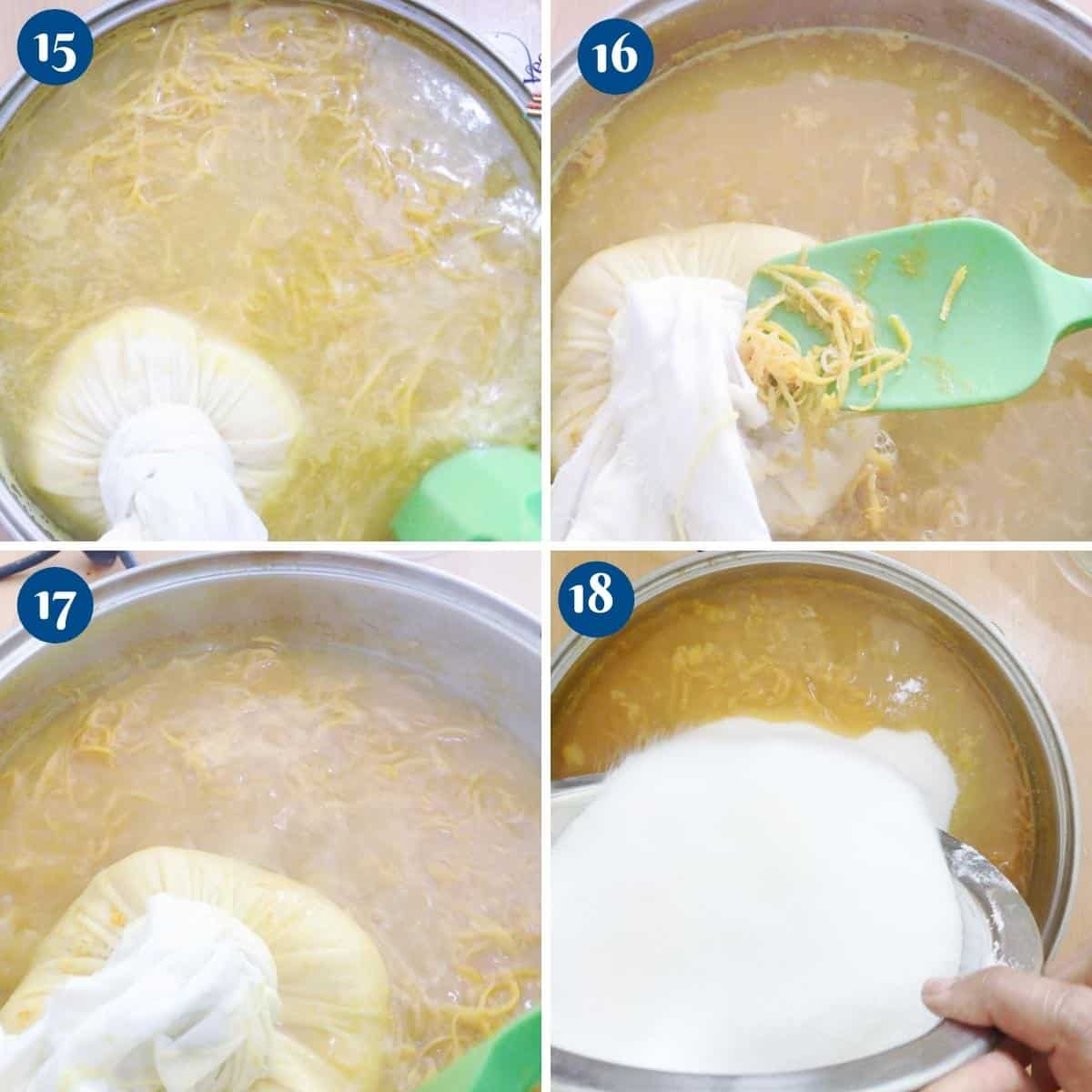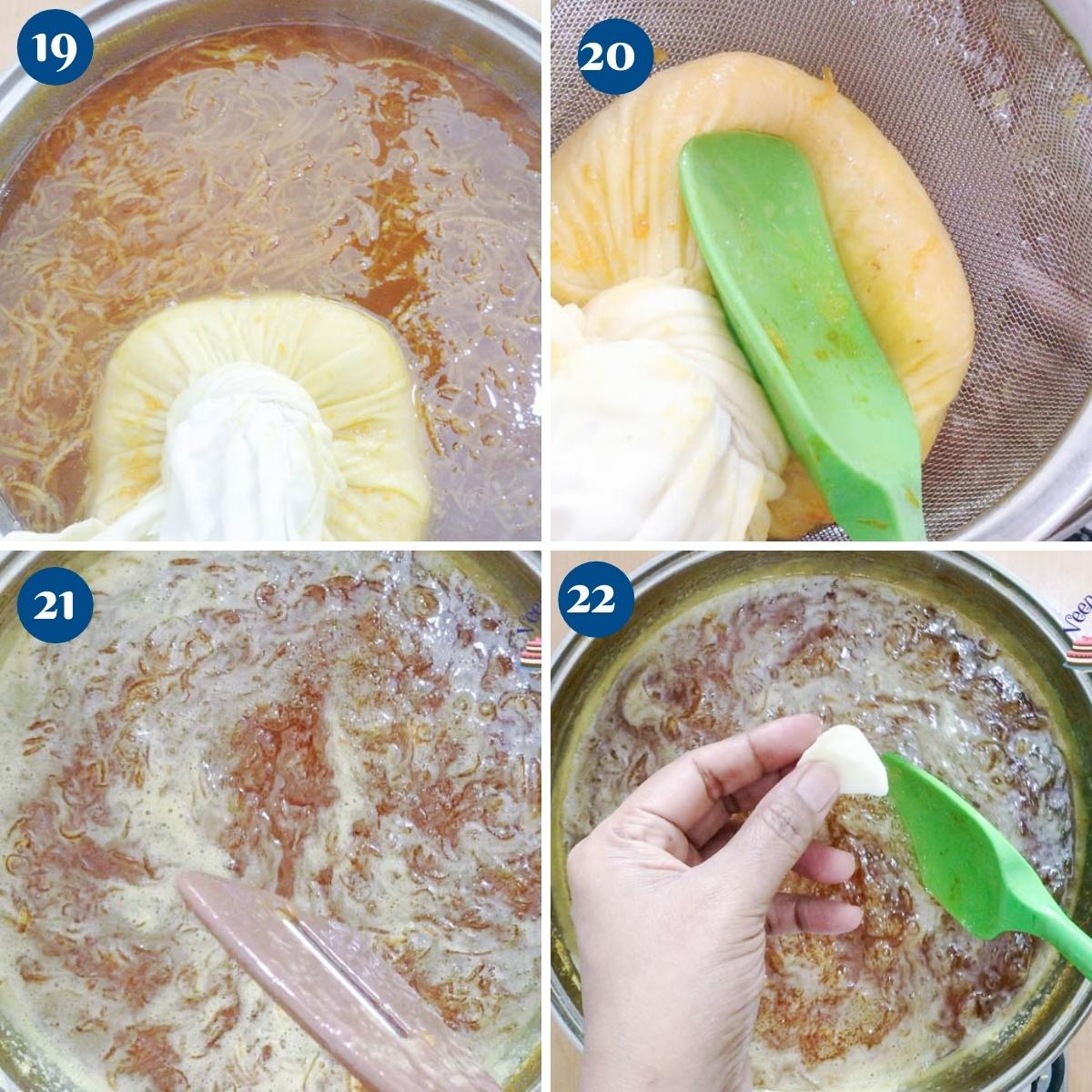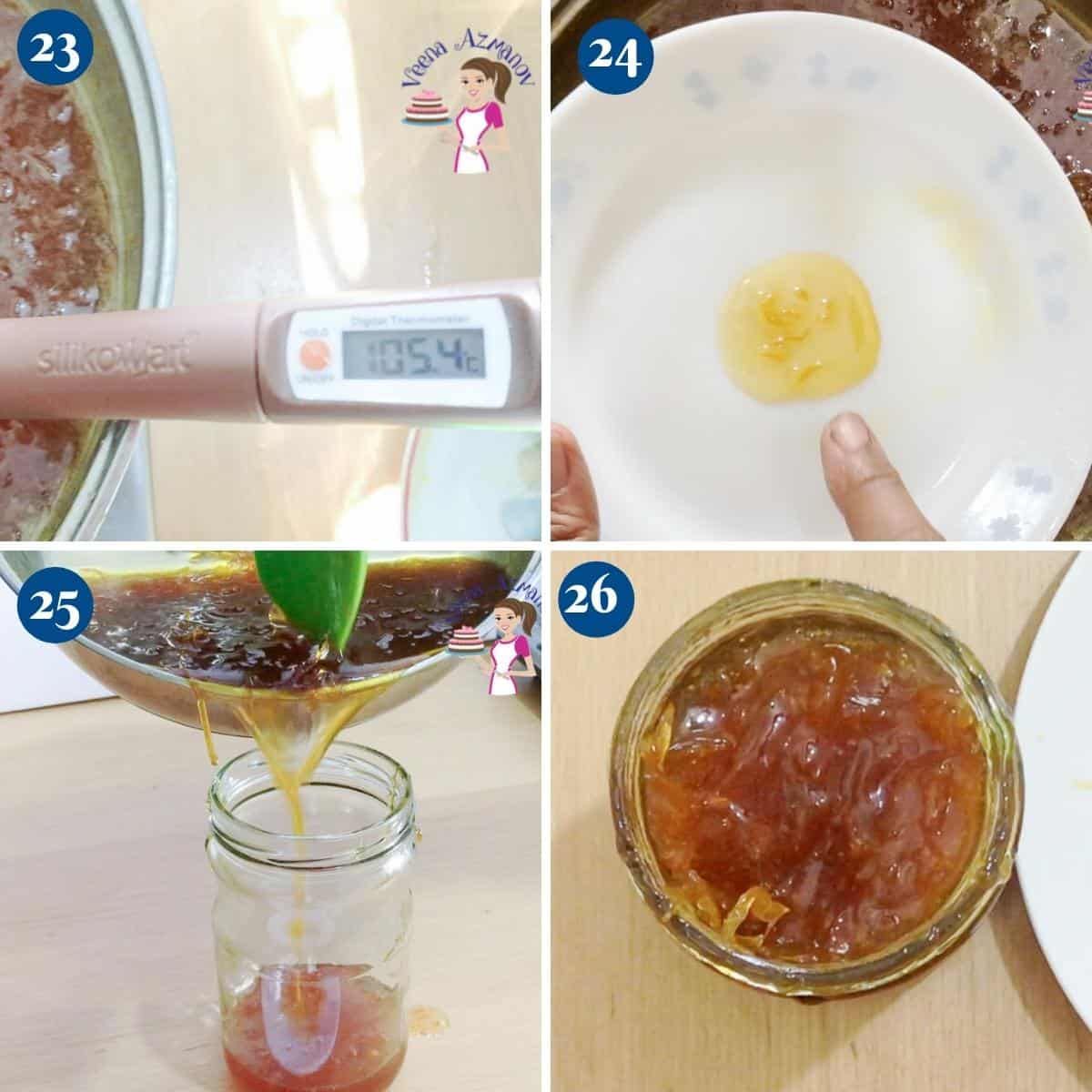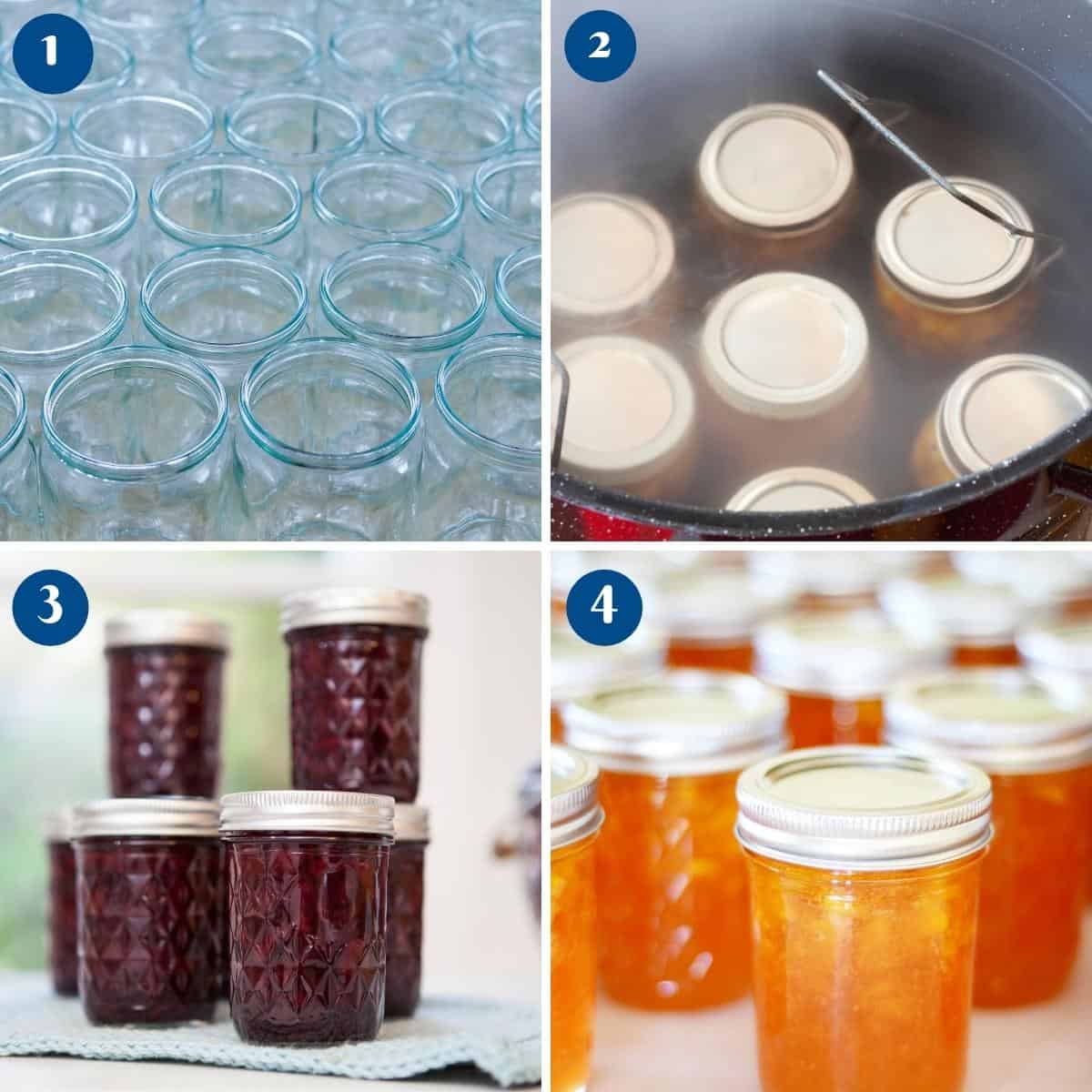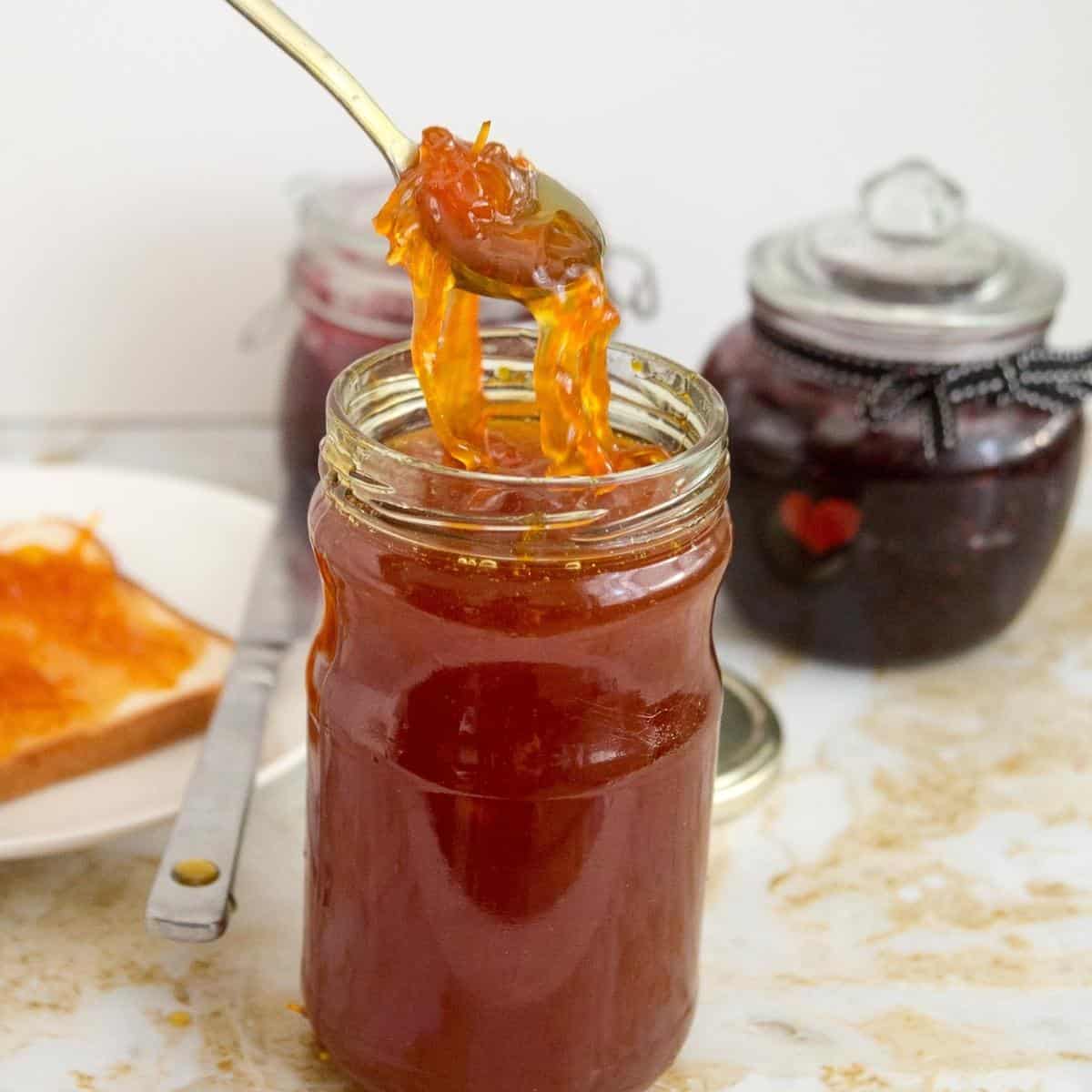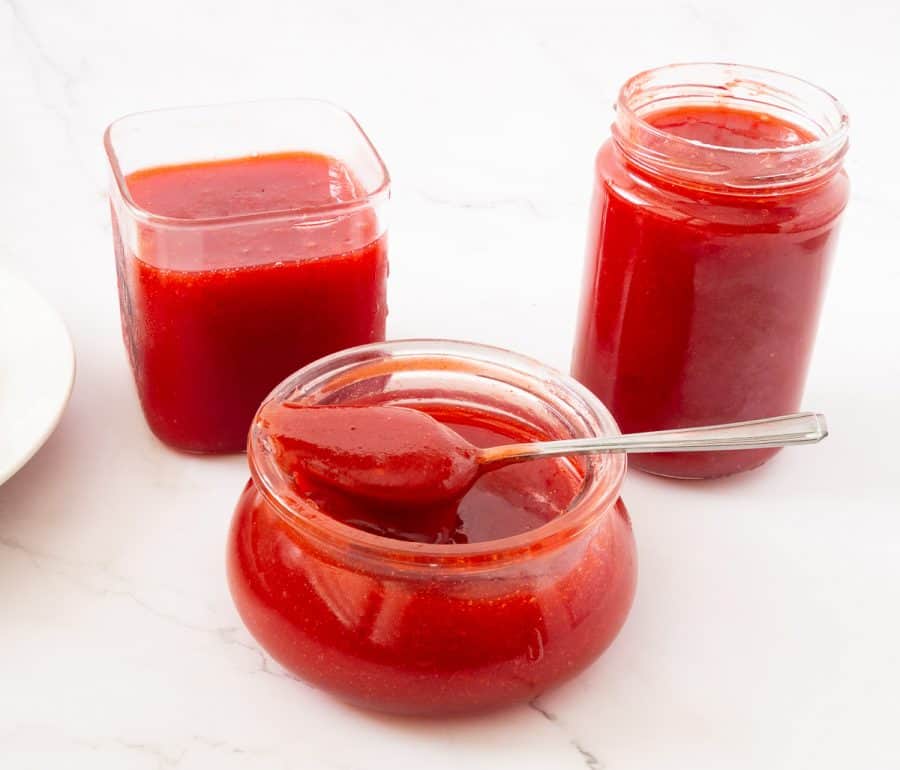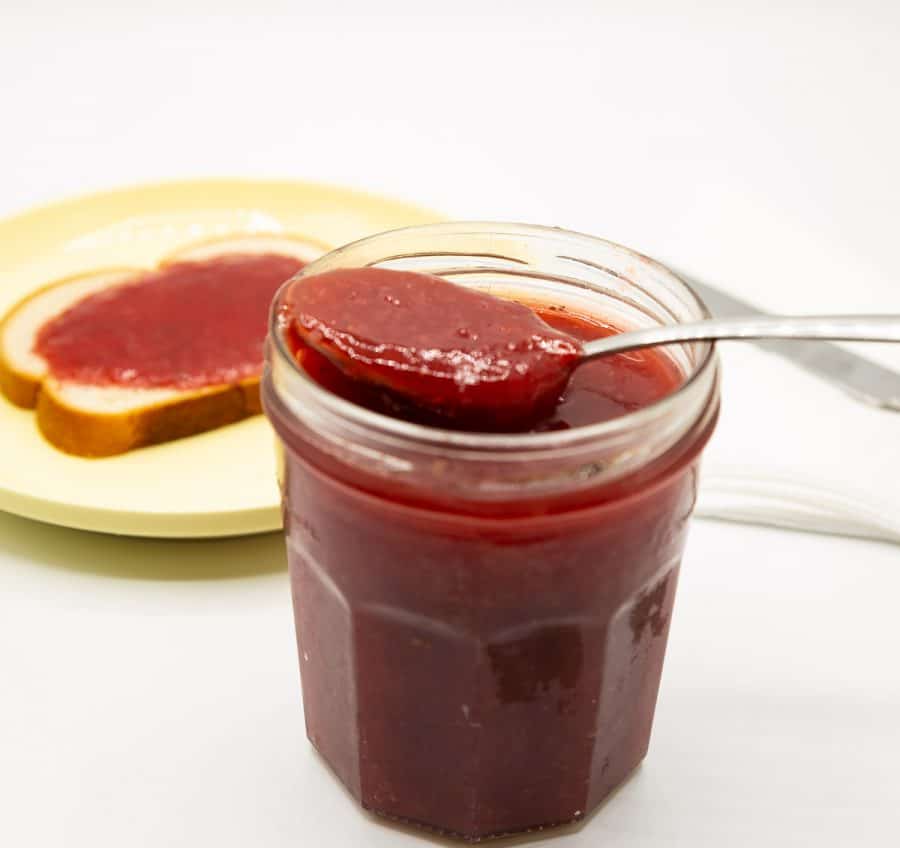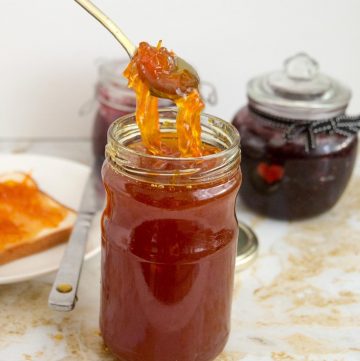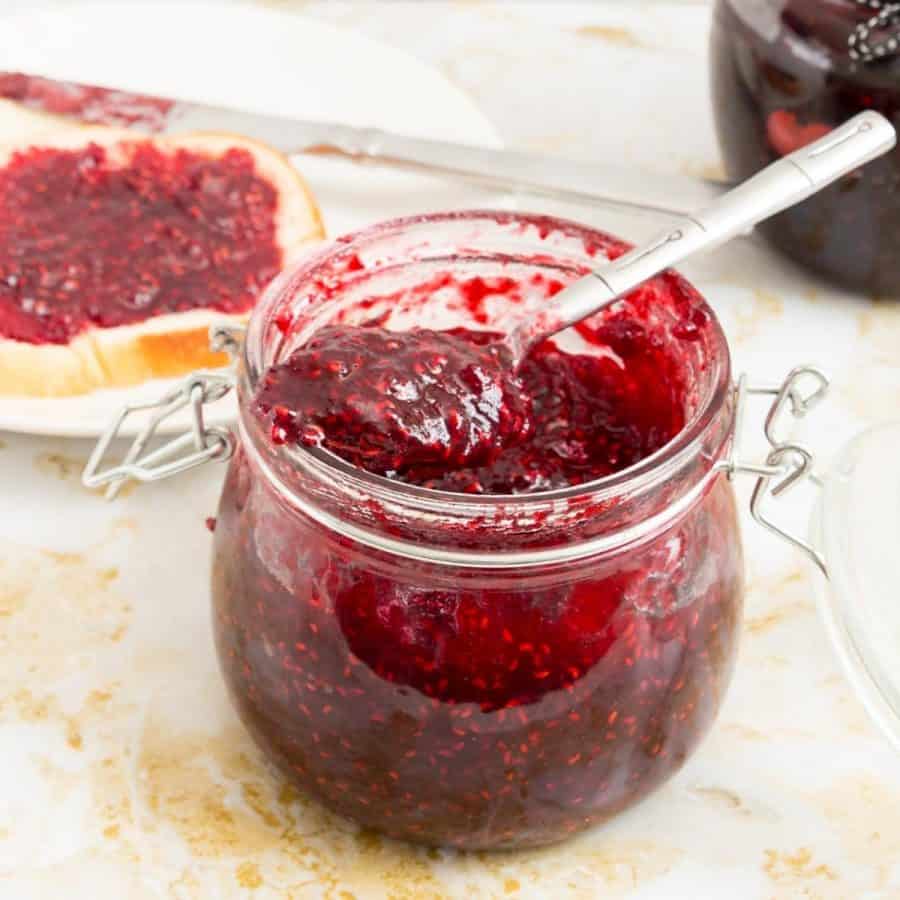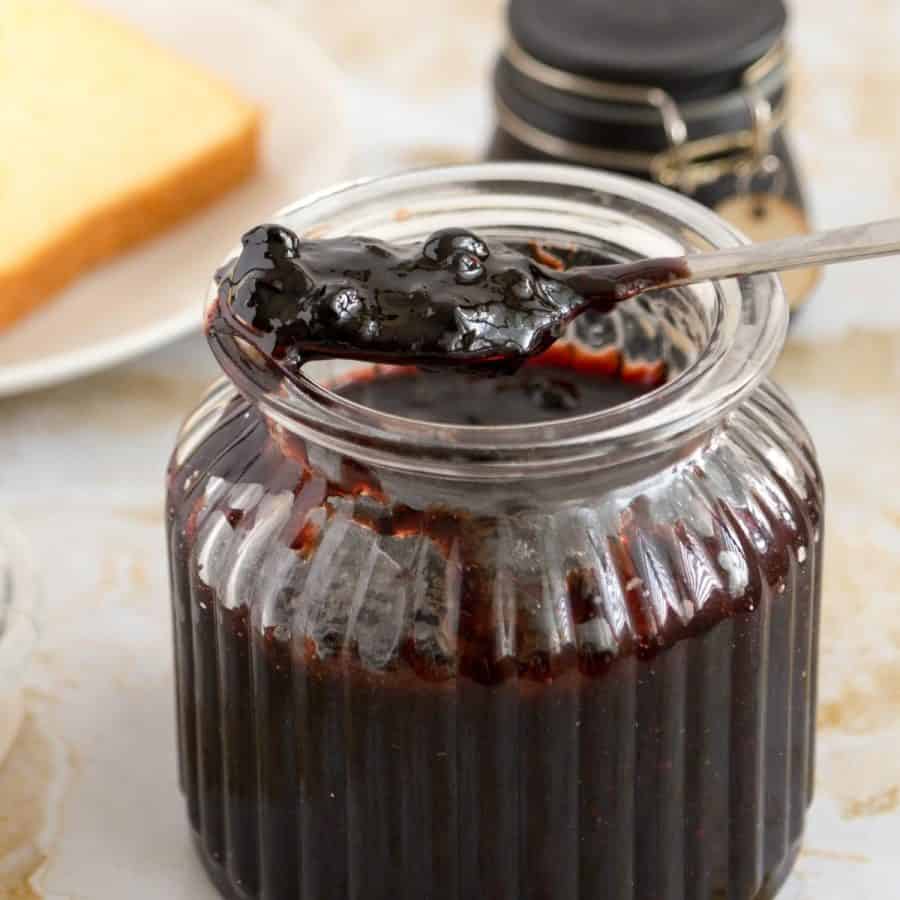If you’ve never tasted homemade orange marmalade before, then you’ll be in for a treat with this one. The biggest advantage of making a good homemade marmalade is that you can use less sugar. The disadvantage of making homemade marmalade is that because it’s low in sugar it’s more delicious and everyone eats it with a spoon, straight from the jar (me), instead of on a slice of bread. Now, there are many different ways to make marmalade. Traditionally, you thinly slice oranges on a mandoline and put them in a stainless steel pot with lemon and sugar. This keeps a lot of the white stuff between the fruit and skin which taste bitter so you have to add more sugar. Today, I scrape the zest into thin strands which I think look nicer. The main advantage of course is that it is less bitter so you can add less sugar.
Why make this marmalade?
No-fail method – This recipe is simple and easy. And if you’ve never made homemade jam you will definitely start now. Not bitter – The preparation for oranges does require a little effort but it’s worthwhile when you see kids enjoy orange marmalade without complaining that it’s bitter. No- canning – This homemade recipe is without the fuss of canning. Just pour the marmalade or jam into sterilized jars and save them in the fridge or freezer. However, I have given you the detailed process for canning too. No pectin – Fruits have natural pectin in the skin and seeds and we use that natural pectin to make this marmalade. Low-sugar – Unlike commercial marmalade, this one is not loaded with sugar. In fact, we use sweet oranges and just half the amount of sugar that is typically used in jams. The timeline for making marmalade depends on the quantity you make. For this batch: Prepare orange (zest and juice) – 30 mins Cook the zest/membranes – 30 mins Cook the marmalade – 30 mins The canning process (if you decide to can) – 45 mins
Step-by-step: Easy orange marmalade recipe
Place two small ceramic plates in the freezer so we can use these to test the marmalade later. Alternatively, you can use a candy thermometer to check the doneness of the jam.
Prepare fruits
Zest and juice the lemons – and set aside. Zest the oranges – Use a sharp vegetable peeler or paring knife and peel the bright orange-colored zest making sure not to get the bitter white pith (the white part) underneath. Julienne or cut the zest into strips. Set aside. Alternatively, you can use a citrus zester that I have used in the video to zest the oranges. And set aside.Pro tip – Thoroughly wash and lightly scrub the orange peels so they are clean before you zest them. Juice the oranges – Cut the oranges in half and squeeze the juice out. Work over a bowl to catch all the juice. Strain the juice to remove any peps or pulp. Set aside.Pro tip – I like to work over a strainer to ensure I get as much of the juice as possible. Collet the pith and membranes – Collect the pulp, pips, and remove as many membranes from the sliced oranges as possible (see video). Tie it all in a cheesecloth. And set aside for later.Pro tip – The pectin we need to make marmalade is in these pips, pulp, and zest, so make sure to save collect as much as you can.
Cook the zest/rind first
In a heavy-bottom pan or a large saucepan, add the orange and lemon zest, lemon and orange juice, and water. Place the cheesecloth with the membranes inside the pot as well.Pro tip – Make sure the cheesecloth is tied well so it does not open in the pot with boiling. Bring to a boil. Then, cook on medium simmer partially covered. Cook until the orange zest becomes soft. The liquid will reduce to about one-third of its original volume.Pro tip – It can take from 20 to 30 minutes depending on the zest as well as the time and temperature of heat. What is important is that the zest gets soft. Then, remove the bag from the pan making sure to squeeze out as much of the liquid as possible.Pro tip – It is best to take this bag out now before we add the sugar. Otherwise, it gets harder to squeeze the sweeter juice out later.
Start the marmalade process
Once the orange zest is soft, add the sugar. Cook on medium heat until the sugar is dissolved. Then, turn the heat up and let the mixture come to a boil. Let it boil for two minutes on medium-high. Then, reduce the heat to medium-low.Pro tip – The marmalade should still be simmering but at a low simmer, not bubbling. Continue to simmer on medium-low for about 20 to 30 minutes more, stirring often with a ladle so it does not stick to the bottom of the pan. The marmalade will continue to thicken as well as deepen in color as it cooks.Pro tip – The cooking time will depend on the quantity of the marmalade as well as the heat applied to it. It’s ok to cook a little longer but there must be a simmer for the gelling process to start.
Test the marmalade
Remove one of the ceramic plates from the freezer. Place a teaspoon of marmalade on the cold small plate.Pro tip – The cold plate will help cool the marmalade almost instantly and give you a good indication if it is ready. Set aside for 2 to 3 minutes. Then, test with your finger. Simply move/push the marmalade with your finger. If it wrinkles/crinkles it means it is ready. And if not, let the marmalade cook a couple of minutes more and test again.Pro tip – You may need to test on a ceramic plate more than once or a couple of times depending on how early you start checking. Alternatively, you can use a candy thermometer – the marmalade should reach 105 C / 221 F.Pro tip – I find the thermometer to be the easiest and fool-proof method to check for doneness.
Optional – Just when you are ready to take the marmalade off the heat, add a teaspoon of butter and stir well. Butter helps dissolve foam that accumulates on top of the jam.Pro tip – You don’t need more than 1 teaspoon of butter to help with the foam. It will also give you that glossy shine. Pour the marmalade into warm sterilized jars leaving 1/4 inch space from the top. Use a clean sterilized knife or spatula to move it a bit – this will remove any air pockets. Place a piece of wax paper on the top before you place the lid on tightly. Clean the rim of the jar with a clean paper towel. Top the lid.Alternatively, use the lid with screw-on rings that come with the canning jars.
The canning process (if you plan to can the marmalade)
Sterilize the jars
Sterilize 4 x 8 oz (250 g) jars by washing them in hot soapy water or cleaning them in the dishwasher with a gentle cycle. Then, place them in the oven for 20 minutes at a low 284 F / 140 C.Pro tip – I find the dishwasher does a good job of cleaning and the oven dries any excess moisture in the bottles. Note – Leave them in the oven until you are ready to use them (you can turn the oven off). Don’t forget to wash and sterilize the bottle lids as well.
Canning process
Place a rack in the bottom of a large stockpot or boiling water canner. Fill half the pot with water. Bring the water in the pot to a boil on high heat. Lower the jars over the rack leaving enough space between the jars.Pro tip – The level of water should be at least an inch above the top of the jars. So if necessary pour more boiling water. Bring the water to a boil again. Cover the pot and process/simmer for 15 minutes. Then, carefully remove the jars from the stockpot and place them on a kitchen towel to absorb any excess moisture. Cool completely.Pro tip – The hot jars are very delicate so make sure to use tongs when taking them out and place them on soft towels to prevent them from breaking. Press the top of the lid to ensure the seal is tight – the lid should not move at all. Store in a cool dry place.
Storage
If canning, the canned orange marmalade will stay in a cool dry place in the pantry for up to a year or even longer. When not canned, the marmalade will stay at room temperature for a month or more in good weather. You can also keep the marmalade in the fridge for 3 to 6 months. Label the jar with the name and date so you know what is in and when you made it.
Strawberry Jam, Microwave Strawberry Jam, Strawberry Jelly Mixed Berry Jam, Apricot Jam, Cherry Jam, Apricot Peach Jam, Fresh Fig Jam, Blueberry Jam Recipe, Raspberry Jam, See all jam recipes
Frequently asked questions
Strawberry Jam RecipeOld Fashioned Raspberry JamApricot Peach JamCherry Jam – No PectinApricot Jam – No Pectin
Thank you for sharing - Save for later
Oranges – The best time to make homemade orange marmalade is when oranges are in season. Fruits in season are always at their best, sweet and juicy. Seville oranges are considered to be sour and juicier, which works perfectly for a large amount of sugar in the jams and marmalade. You can also use navel oranges. Make sure to use organic oranges that have not been treated with pesticides since we also use the zest. Sugar – Unlike commercial jams, I like to use less sugar – which is usually half the quantity of the fruit. For example, if I have 1 kg of fruit I usually add 500 grams of sugar. So my jam is more fruity rather than just sugary sweet. But if you like it sweet you can add more. Most commercial jams are made with 3/4 amount of sugar in this case 750 grams. Lemon Juice – It’s best to use fresh lemon juice and organic lemons for the zest. It also helps prevent crystallization. Lemons also have a lot of natural pectins. Butter – Now you don’t really need butter, and yet if you notice, often there is foam or scum in the marmalade when cooking. Adding a small amount of butter helps clarify the orange marmalade. Flavor/spice – Orange marmalade does do well with a few flavors. A hint of ginger adds a nice warmth. So does cinnamon. Other flavors like star anise and nutmeg work too.